Main Image: © via Canva.com
We talk a lot about applying oils to the mids and ends of your hair to tame frizz, add extra hydration, and give your red hair a sleek shiny look. But have you heard of scalp oiling? It’s a common practice in many countries and can help your hair be healthier, shinier, and even grow longer. So what is scalp oiling? Is it right for your red hair, and if so how do you get started? Let’s find out.
What is scalp oiling?
Scalp oiling is pretty straightforward. It’s the process of applying oil to the scalp to help add moisture, increase shine, and give your hair the vitamins and nutrients it needs to grow long and strong. This is done to promote scalp health, nourish hair follicles, and improve the overall condition of the hair. The oils are massaged into the scalp, and some people leave them on for a period of time before shampooing their hair. Scalp oiling can help moisturize the scalp, reduce dandruff, and enhance hair’s shine and manageability. It’s a popular technique in many hair care routines.
Who can benefit from scalp oiling?
Those with regular to dry hair will benefit from scalp oiling the most. Those with oilier hair types may benefit, but the benefits may not outweigh the downside of having increased oils on your scalp. If you have thicker or coarse hair you can greatly benefit from scalp oiling. If your hair is thin, scalp oiling may help to thicken it, but you may want to use this process sparingly to avoid an excess of oils.
To break it down more, here are some groups who can benefit from scalp oiling:
1. People with dry scalp: Scalp oiling helps to moisturize and hydrate a dry scalp, reducing itching and flakiness.
2. Individuals with dandruff: Oiling the scalp with anti-fungal oils like tea tree oil can help combat dandruff and its associated symptoms.
3. Those with damaged hair: If you have damaged or brittle hair, applying nourishing oils can improve hair elasticity and reduce breakage.
4. People with Frizzy Hair: Scalp oiling can help tame frizz and make hair more manageable.
5. Individuals with Hair Loss Concerns: Some hair oils contain ingredients that may promote hair growth by stimulating the hair follicles and improving circulation to the scalp.
6. Individuals with Curly or Coily Hair: Natural oils can help define curls and provide extra moisture to textured hair types.
7. Anyone Seeking Overall Hair Health: Even if you have relatively healthy hair and scalp, regular scalp oiling can help maintain and enhance the condition of your hair.
It’s important to choose the right type of oil for your hair and scalp type, as different oils offer various benefits. Also, be mindful not to overuse oils, as excessive oiling can lead to greasiness. Consulting with a dermatologist or hairstylist can provide personalized recommendations for your specific hair and scalp needs.
What oils should you use?
Different oils can be used for scalp oiling, depending on what your hair and scalp need. Below are some of the most commonly used oils and what benefits they have:
- Coconut Oil – reduce dandruff, tame frizz, and add moisture
- Sesame Oil – promotes hair growth
- Argan Oil – adds shine, reduces dandruff, fights frizz
- Rosemary Oil – aids in hair growth, reduces dandruff and may help prevent premature graying
- Almond Oil – prevents dandruff and scalp inflammation
- Peppermint Oil – promotes hair growth
- Pumpkin seed Oil – strengthens hair, adds shine, adds moisture, may prevent hair loss
- Mixed Oils – mixed benefits depending on the blend
How to properly oil your scalp:
Brush out any tangles and section the hair. Apply a few drops of oil directly to your scalp. The oil should be enough to massage all over the entire scalp, but should not saturate the hair. Using too much oil can make it difficult to wash out, and there is no research to show that excess oil benefits the scalp in any way. Once the oils have been applied to the scalp, massage them in using your fingers or a scalp massager. Avoid brushing your hair as you want the oils to stay on the scalp and not transfer down the strands. You can cover your hair with a towel, shower cap, or plastic and leave for at least 30 minutes before washing out. Oils can be left as long as overnight if you wish. Wash as normal, you may need to double shampoo to remove all oils from your scalp.
Optionally, use a conditioner, and then allow your hair to air dry or use a low-heat blow dryer. Repeat this scalp oiling treatment as needed, typically once a week, to maintain scalp health and nourish your hair while avoiding excessive greasiness.
Should redheads try scalp oiling?
Yes, redheads can benefit from scalp oiling just like individuals with other hair colors. The practice of scalp oiling is not dependent on hair color but rather on individual hair and scalp needs. Red hair can sometimes be associated with fair and sensitive skin, so choosing a mild and nourishing oil that suits your scalp type can help maintain scalp health, reduce dryness, and promote overall hair health. It’s essential to select oils that are appropriate for your specific hair concerns, whether it’s moisturizing, combating dandruff, or enhancing hair strength and shine.
Rock it like a Redhead!
RELATED POSTS
READ: 5 Top Tips for a Healthy Scalp and Red Hair
READ: 6 Redhead-Approved Essential Oils for Hair Growth & Health



